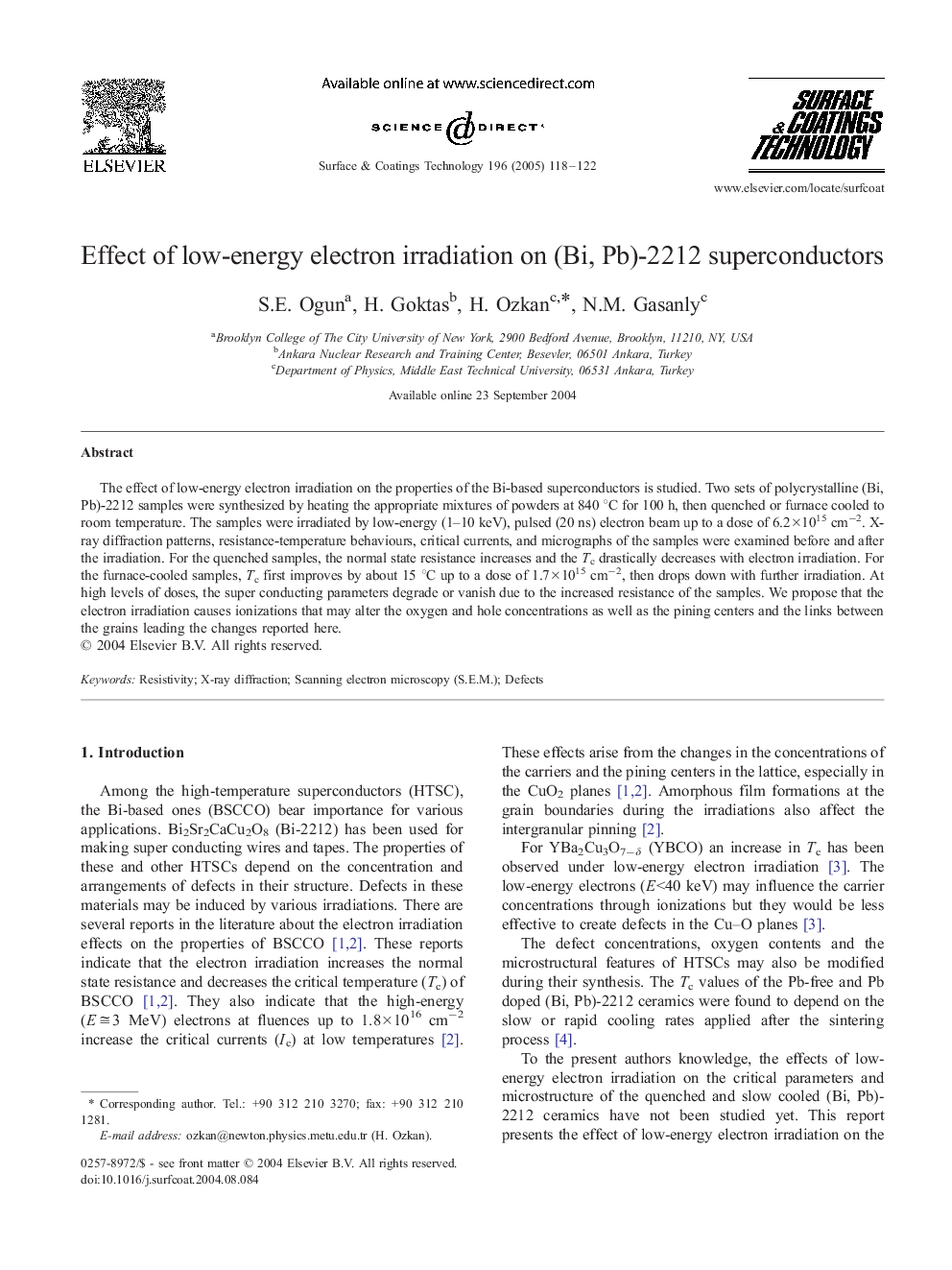| Article ID | Journal | Published Year | Pages | File Type |
|---|---|---|---|---|
| 9809678 | Surface and Coatings Technology | 2005 | 5 Pages |
Abstract
The effect of low-energy electron irradiation on the properties of the Bi-based superconductors is studied. Two sets of polycrystalline (Bi, Pb)-2212 samples were synthesized by heating the appropriate mixtures of powders at 840 °C for 100 h, then quenched or furnace cooled to room temperature. The samples were irradiated by low-energy (1-10 keV), pulsed (20 ns) electron beam up to a dose of 6.2Ã1015 cmâ2. X-ray diffraction patterns, resistance-temperature behaviours, critical currents, and micrographs of the samples were examined before and after the irradiation. For the quenched samples, the normal state resistance increases and the Tc drastically decreases with electron irradiation. For the furnace-cooled samples, Tc first improves by about 15 °C up to a dose of 1.7Ã1015 cmâ2, then drops down with further irradiation. At high levels of doses, the super conducting parameters degrade or vanish due to the increased resistance of the samples. We propose that the electron irradiation causes ionizations that may alter the oxygen and hole concentrations as well as the pining centers and the links between the grains leading the changes reported here.
Keywords
Related Topics
Physical Sciences and Engineering
Materials Science
Nanotechnology
Authors
S.E. Ogun, H. Goktas, H. Ozkan, N.M. Gasanly,
